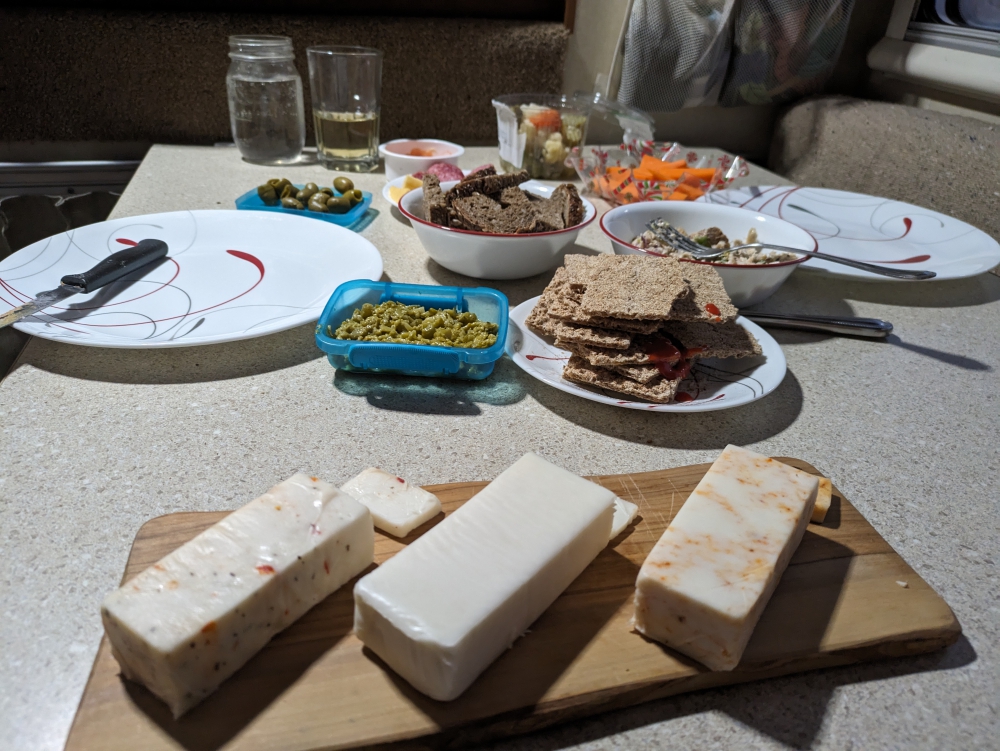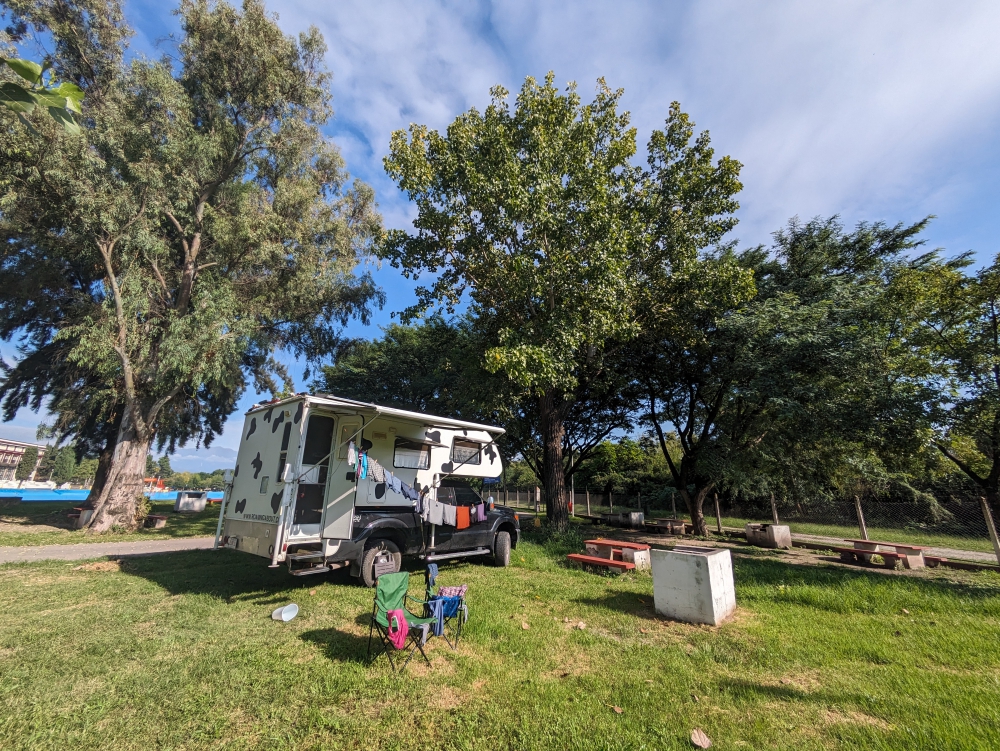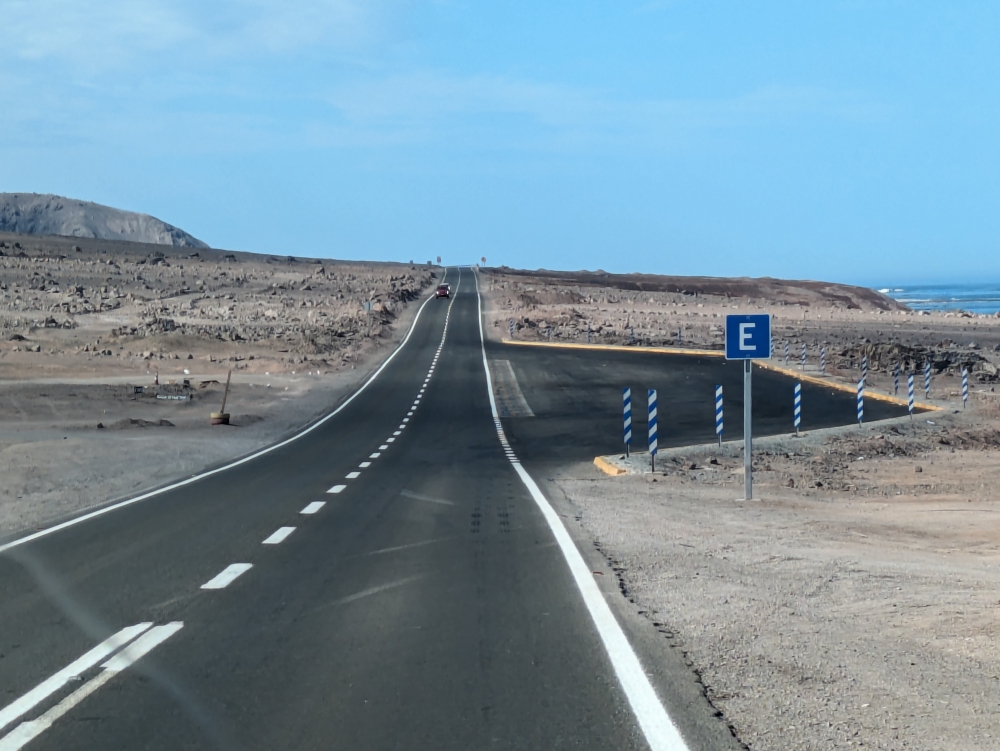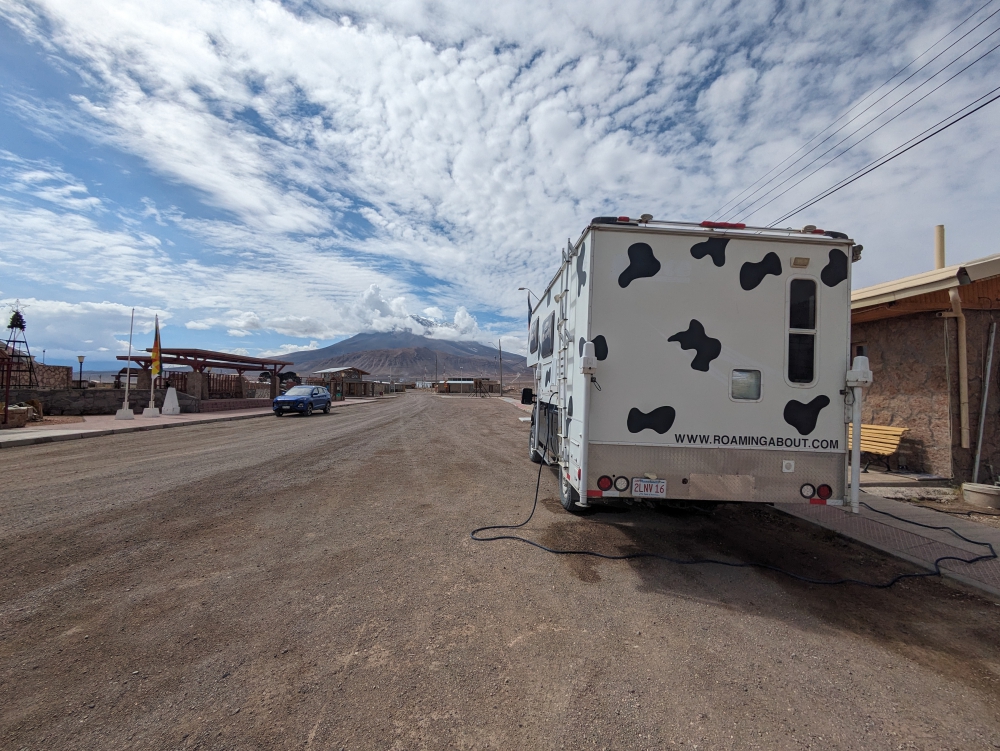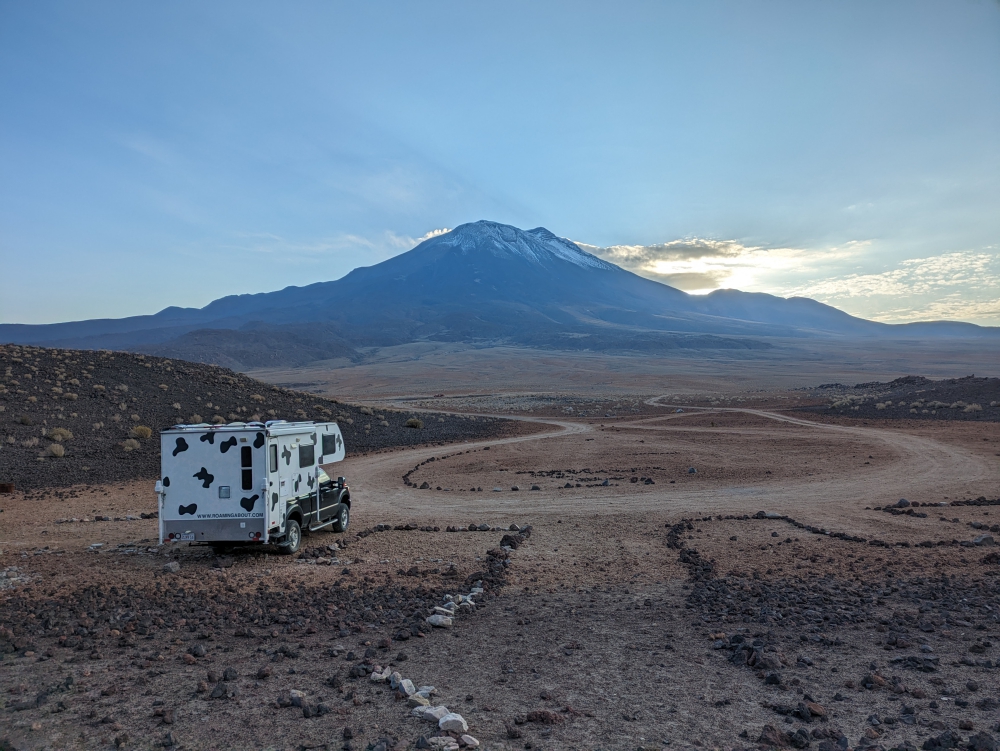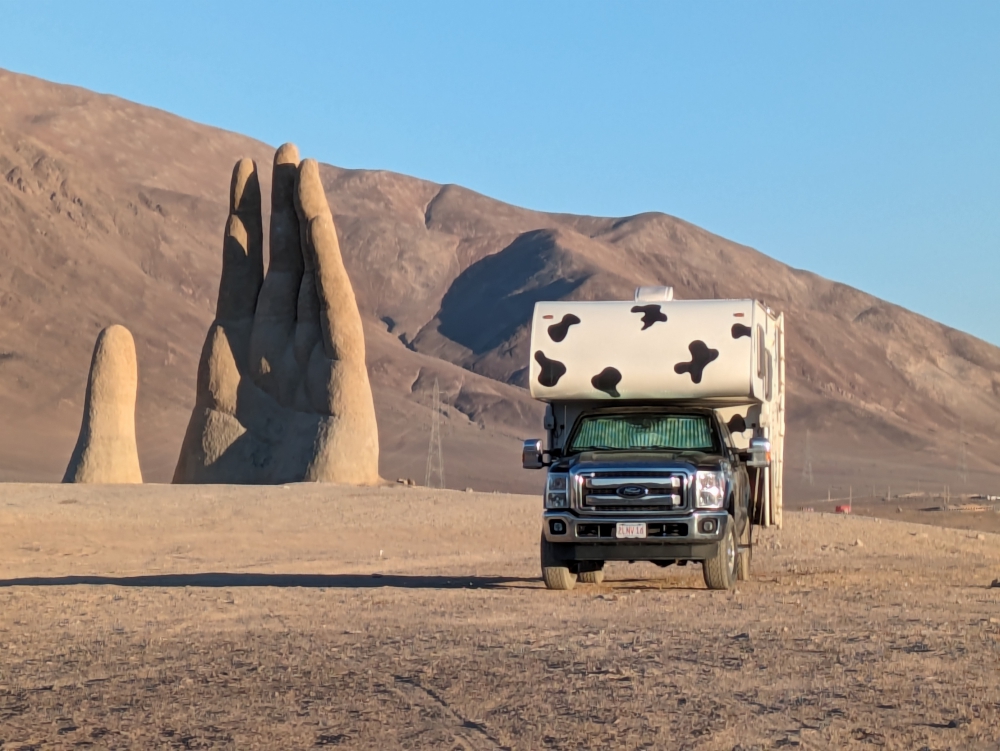
Every month, I post a report of our expenses to show that it is possible to live a comfortable, exciting, and adventurous life without breaking the bank. The less money you spend, the less you need to make. 🙂
This report includes ALL of our expenses, in US$, for two adults and one 60-pound dog (we adopted Maya on June 4th, 2019). Under groceries we incorporate food, produce, and non-alcoholic drinks predominantly bought in supermarkets. Toiletries belong in that category as well. Dining out means eating at a restaurant/event or purchasing take-out food. The health category covers non-prescription medicines and vitamins/supplements; medical contains prescription drugs and doctor’s visits. Because of our income level, Mark and I are eligible for free health care within the state of Massachusetts. For check-ups and extensive care, we return to the US East Coast. Other health issues are resolved locally and out of pocket where needed and possible.
In April, Mark, Maya, and I divided our time between Argentina and Chile in our truck camper Thirsty Bella. We made some headway south, to Mendoza, and decided to hop over to Santiago de Chile for car maintenance. After two weeks in Chile, we slowly drove back to the Mendoza area in Argentina.
(As always, hover over or click on photos in galleries to read their captions.)
Our car category was huge; over $1,100 in total! A lot of that went to fuel, as always, but the biggies last month were two new tires ($326) with a $26 installation and balancing fee, a new battery for the engine ($137), and an oil change at a garage, which we did ourselves ($92). We also bought seven quarts of oil extra for our next time ($80). Mark found a spot to store those in one of our utility boxes.
We paid a total of $11 in tolls and spent some pesos on parking in Santiago when leaving the camper behind and for our rental car in Valparaiso.
Groceries were quite expensive in April as well. We joined a couple of potlucks, prepared a special dinner for seven, made daily walks to the fancy grocery store Jumbo in Santiago, and splurged on some goodies at the El Milagro vineyard early on.
We bought wine in both countries, since, you know, we are in wine heaven here. The Santiago area is well-known for the red grape, Carmenere, and Central Argentina produces fabulous Torrontes (white) and Malbec (red or tinto in Spanish) wines. Mark and I enjoy them all. We used half of a $25 “drinking out” donation for three bottles of wine at the store.
While in Chile, we decided to buy one more bag of dogfood for Maya, since that’s the place where we can find her Taste of the Wild – Pacific Stream for a “decent” price ($66 for 12kg/26lbs) and we were one bag down. Also, our remaining bags are bigger than the new one and we don’t want to leave open bags of food in the camper during our summer escapade to the US and Belgium. Maya’s new toy lasted all of ten minutes!
We didn’t go out for dinner much in April; twice, one of which was a take-out pizza in Santiago the day of our arrival ($13) and the other a lunch in Valparaiso ($12). Both times took place in Chile, which, believe it or not, is now cheaper than Argentina for most things. The devaluation of the Argentinian peso is still worsening, leading to continued price increases. We didn’t eat out here at all, last month, and cooked almost all our meals at home. The other $25 in the report was a delayed credit card charge for a dinner out in March.
Some of our followers have been generous with one $25 dining out donation (which we will use this month) and two “$25 for drinks” donations, most of which we will enjoy in May as well. For the first time ever, someone walked by our camper (in Santiago de Chile), noticed our Massachusetts license plates, checked out this blog, and treated us online to drinks, because he is also from our state! Thank you to all our supporters, followers, readers. and contributors!
As usual, $35 went to our Starlink subscription, while the other half is paid by our business. And, we topped up the propane tank for $10 in San Juan, Argentina. That usually lasts three months. We managed to fill our water tank multiple times for free in April as well.
Transportation costs consisted of splitting a rental car for the day with our friends from Meat Around The World, to explore Valparaiso (see next blog post) and the expensive fuel to get there – they paid for the tolls and we covered parking – and a useless taxi drive in Santiago. We were dropped off in the wrong place and had to walk back!
Mark ordered household items and camper parts on Amazon in the US, to fix a few things upon our return next September and we bought a new frying pan and spray bottles in Chile. Did I mention yet that anything imported on this continent is cheaper there than in Argentina?
We also paid $12 for two baskets of dirty laundry in Uspallata, Argentina, after waiting through the weekend because the laundromat wasn’t open and hearing from our friends that this cost $2 six months ago! Not willing to spend even more, Mark and I washed a basket-size worth of linen and clothes by hand in river water.
The other categories were low. Entertainment ($7) was had on two different transportation methods in Chile, namely a cable car in Santiago and two old-style elevators (ascensores) in Valparaiso. Mark ordered an app for his tablet and I needed throat medicines after being sick for over a week. A bad bug/cough had me in its grip for two weeks. Once, we had to leave our quiet camping spot in nature to find a pharmacy in town.
The only money Mark and I spent on drinking out was $3 at a pricey café in Valparaiso, where we split a juice. We also gave a small donation to the firemen (bomberos) and had our car sprayed for $1 at an agriculture spot.
We boondocked the entire month and therefore camping was free for us in April.
Our total was high again, but most of the $1,844 went to car maintenance and fuel, which were needed and made us feel productive. Without that vehicle attention, we’d have been back at our monthly average. After reaching the high numbers in that category, we really refrained from splurges and eating out. We will see what May brings!
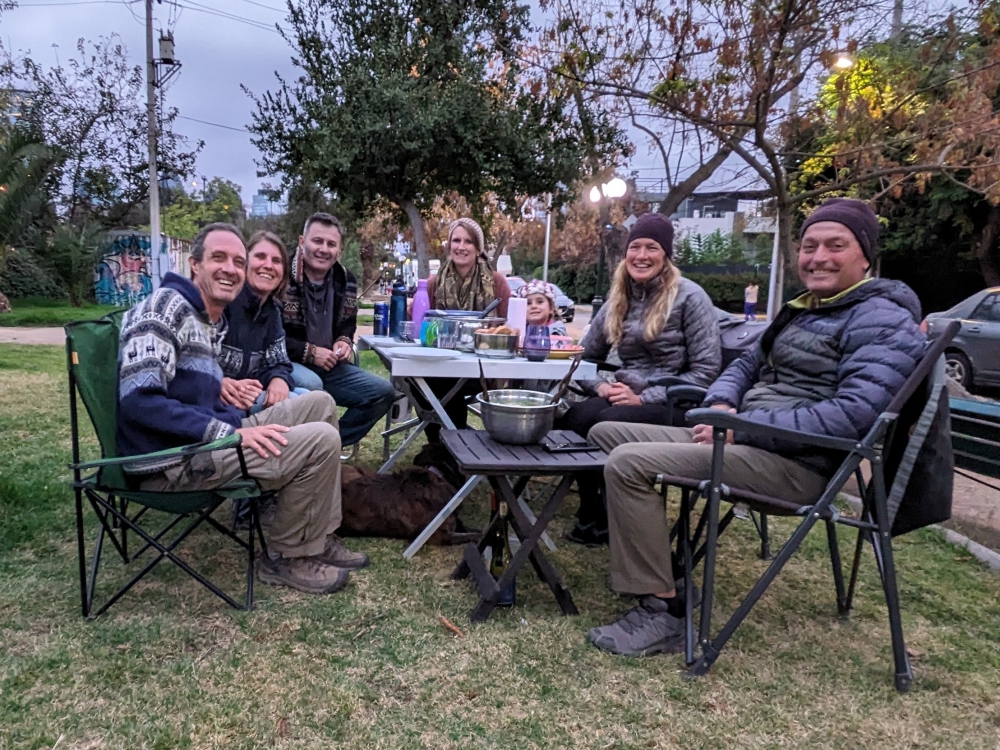
Our group on the last night together in Santiago: Mark, Liesbet, Richie, Abigail, Zoe, Heather, Jon, and Maya
April 2024 Overview:
Car (maint.: $655; fuel: $432; tolls: $11; parking: $8):
Groceries:
Alcohol:
Dog (food: $66; toy: $4):
Dining out:
Utilities (Starlink internet: $35; propane: $10):
Transportation (rental car: $29; taxi: $4):
Camper (tape, drain USA):
Household (blade, pan, spray bottles):
Laundry:
Entertainment (elevator, cable car):
Computer (tablet app M):
Medical (meds L):
Drinking out:
Miscellaneous:
Camping:
TOTAL:
$1,106
$384
$74
$70
$50
$45
$33
$27
$24
$12
$7
$4
$3
$3
$2
$0
———
$ 1,844
(It might be easier to read the table when turning your device in the horizontal position.)
Find all our expense reports here. To learn what other full-time nomads spend each month, check out the blogs of our vanlife friends Duwan and Greg at Make Like An Ape Man.
Next up: A colorful day trip from Santiago to Valparaiso, Chile.
If you are enjoying these posts, please consider donating to Roaming About in support of our website and our lifestyle. A big thank you to all our readers who have helped out in the past!
























































































































